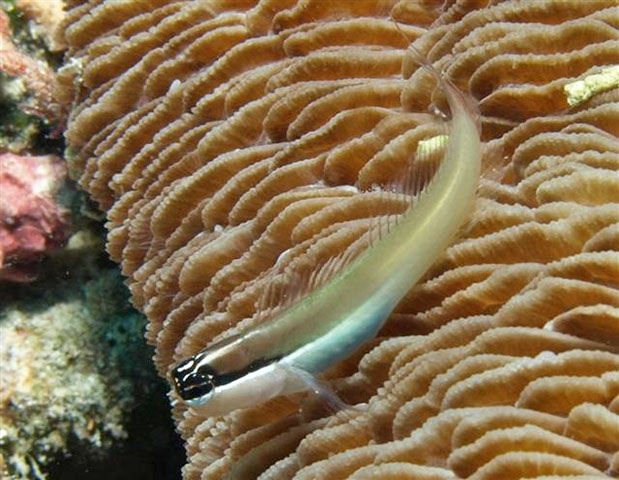| Blenniidae (Combtooth blennies), subfamily: Salariinae |
| 3.4 cm SL (male/unsexed) |
|
reef-associated; marine; depth range 2 - 15 m |
| Western Pacific: Indonesia (Seribu Islands off northwestern cost of Java eastward to Biak off the northwestern coast of New Guinea). |
|
Dorsal spines (total): 11-13; Dorsal soft rays (total): 13-15; Anal spines: 2-2; Anal soft rays: 15-17. Description: It is blue on the belly region and has yellow lines on the head (Ref. 48636). |
| Adults occur solitary or small groups on outer slopes and coastal reefs at 2-15 m deep (Ref. 90102). They live on rocks and corals (Ref. 37816). They also occur in small groups in coral rich areas on large rounded coral heads (Ref. 48636). Oviparous. Eggs are demersal and adhesive (Ref. 205), and are attached to the substrate via a filamentous, adhesive pad or pedestal (Ref. 94114). Larvae are planktonic, often found in shallow, coastal waters (Ref. 94114). |
|
Least Concern (LC); Date assessed: 24 March 2009 Ref. (130435)
|
| harmless |
Source and more info: www.fishbase.org. For personal, classroom, and other internal use only. Not for publication.
